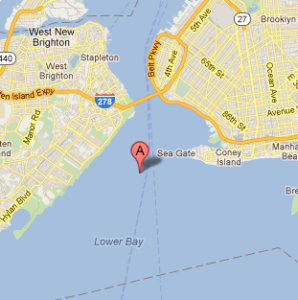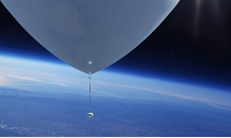Sue Lange's Blog, page 14
February 16, 2012
Dangerous Times for the Scientist
 I recently stumbled across a group called "Public Employees for Environmental Responsibility." PEER. Apparently they "protect employees who protect our environment." Specifically the scientists.
I recently stumbled across a group called "Public Employees for Environmental Responsibility." PEER. Apparently they "protect employees who protect our environment." Specifically the scientists.
It's odd to think scientists would need such protection. The scientists have the numbers after all, the proof. But apparently knowing the truth is a dangerous thing even in our enlightened times. According to the PEER website, "Public agency scientists, particularly at the federal level, are under growing political pressure to alter, dilute or suppress their findings on issues of economic impact or controversy."
Sad and scary. And I'm pretty sure this has nothing to do with political parties.
Issues they are currently working on include President Obama's less than stellar environmental record; protection for wildlife such as whales, manatees, and the Florida Panther; public health threats such as coal combustion waste and Pharma pollution; problems with urban sprawl.
These types of issues tend to be politically hot. The scientists working on them can find themselves threatened if they come up with numbers unfavorable to industry and political leaders. These scientists are the people we depend on for our health and the protection of our natural resources. The last thing we want is for them to feel threatened.
Sad to think that science must continue the fight for the truth. I thought we left those battles in the dark ages.
One entry at the PEER site illustrates in a humorous way what this group is up against. It's in their "previous campaigns" area. Apparently there was at one time not too long ago a push to turn our national parks into "faith-based parks." Religious symbols and posting of Bible verses on public land doesn't bother me much. We put quotes from John Muir and Henry David Thoreau all over the place, why not spiritual logic from other sources. But forcing Biblical explanations for plate tectonics on the unsuspecting public bugs me.
The PEER site puts it best "…the Grand Canyon is a bit older than a mere few thousand years!"
God bless them for their sense of humor.








February 8, 2012
The Diamond Planet
 Supposedly there's a planet orbiting Pulsar J1719-1438 that's made of crystalline carbon, i.e. diamond. Before you take out a second mortgage on your home to help finance your reservation on one of Virgin Galactic's rockets, relax.
Supposedly there's a planet orbiting Pulsar J1719-1438 that's made of crystalline carbon, i.e. diamond. Before you take out a second mortgage on your home to help finance your reservation on one of Virgin Galactic's rockets, relax.
First off, it's too far: 4,000 light years away. We still haven't discovered any wormholes to the nether regions of the galaxy. It's on our to-do list, but for now extra-solar travel is not in the cards.
Also, according to one expert at the University of Manchester, Ben Stappers, "I don't imagine that a picture of a very shiny object is what we're looking at here."
Still, kind of fun to imagine a diamond planet somewhere populated by carbon crystal humanoids. I envision them wearing pressurized organo-molecular studs (rare and precious) in their ears to their planet's equivalent of the Academy Awards.








February 2, 2012
Seals in New York City
 Fun fact I discovered over at Wind Against the Current: there are seals living in New York Harbor. I lived in NY for about 15 years and I never saw any. But then I left too soon. People began seeing harbor seals wintering on Swinburne and Hoffman Islands in Lower NY Bay in 2001. I was long gone by then.
Fun fact I discovered over at Wind Against the Current: there are seals living in New York Harbor. I lived in NY for about 15 years and I never saw any. But then I left too soon. People began seeing harbor seals wintering on Swinburne and Hoffman Islands in Lower NY Bay in 2001. I was long gone by then.
To be honest I'd never heard of these two islands before I read the post. And for good reason. They're tiny. They lie about half-way between Coney Island to the east and Staten Island to the west. Why would anyone care about two itty bitty man-made islands that are off-limits to humans, especially when the bright lights of Coney and Staten are there turning your head? (See map above for reference.)
Apparently, the water in the Hudson River and elsewhere has been cleaned up enough that fish are returning to the area, specifically the kind that seals eat. According to nature's mandate, whither goes the food, so doth the eater of the food. Local expert, Paul Sieswerda, says the population of harbor seals has been expanding southward from the Massachusetts area for a while. That's one advantage of losing all those manufacturing jobs: less pollution, more nature.
The seals are here for only part of the year, though. They prefer to move to cooler water north during the summer. Makes me wonder if climate change will eventually have an effect and move them back out of the area permanently. Guess we'll find out. In the meantime, I think it's wonderful that nature is able to chase its mandate in the waters of the Big Apple.








January 30, 2012
Climate Change Promotes Return of the Reptiles? Maybe.
 Remember The Hellstrom Chronicle? That movie that said insects (undoubtedly locusts, cockroaches, and head lice) are the true inheritors of the Earth. They would one day push humans to extinction. Never gonna happen. Why? Because reptiles eat insects. And as global warming goes into effect, not only are the world's coasts going to be drowned, the environment is going to be increasingly favorable to lizards. You go, gecko!
Remember The Hellstrom Chronicle? That movie that said insects (undoubtedly locusts, cockroaches, and head lice) are the true inheritors of the Earth. They would one day push humans to extinction. Never gonna happen. Why? Because reptiles eat insects. And as global warming goes into effect, not only are the world's coasts going to be drowned, the environment is going to be increasingly favorable to lizards. You go, gecko!
According to Joshua Amiel and Richard Shine of the University of Sydney, not only do scinid lizards, like the skink pictured above, grow larger in warmer conditions, they are smarter too. Just one more environmental marker to keep your eye on as things heat up.
At any rate, I guess I can catch up on the sleep I've been missing ever since that dang movie came out in the 70s.








January 25, 2012
The Sound of Bacteria
They've figured out how to listen to bacteria.
Alexander Ohlinger et al. at the Ludwig Maximilian Universitiy in Munich have constructed a highly sensitive sound collecting device using a gold nanoparticle confined in an optical trap. This trap acts like a pair of tweezers for sound waves traveling in a liquid medium. Apparently this nanoparticle setup can detect sounds down to -60dB. The lowest sound a human can hear is around 0dB. The loudest we hear without pain is 120dB. To give you an idea of these numbers, according to WorsleySchool.net, a human whisper is about 20dB. A power saw is about 110dB.
It's hard to imagine -60dB, but I hope they are able to do this. I'd love to hear what a bacterium sounds like as it's shuffling around the miasma.








January 20, 2012
Singularity Watch: Obsolescing Synthesized Human Voices
In the January 7th issue of New Scientist, Sam Blackburn talks about Stephen Hawking's synthesized voice.
"I guess the most interesting thing in my office is a little grey box, which contains the only copy we have of Stephen's hardware voice synthesiser. The card inside dates back to the 1980s and this particular one contains Stephen's voice. There's a processor on it which has a unique program that turns text into speech that sounds like Stephen's, and we have only two of these cards. The company that made them went bankrupt and nobody knows how it works any more. I am trying to reverse engineer it, which is quite tricky."
The above paragraph is sublime.
Turning ourselves into cyborgs is not going to be as easy as everyone thought. In our plans for posthumanism does anyone ever consider how much we will be paying when someone has the patent on the human heart?








December 31, 2011
Weird Science Day 31: Goodbye 2011 International Year of Chemistry
 The United Nations declared 2011 to be the International Year of Chemistry. The idea was to "increase the public appreciation of chemistry in meeting world needs, to encourage interest in chemistry among young people, and to generate enthusiasm for the creative future of chemistry." They chose the year 2011 for a couple of reasons. It marks the 100th anniversary of Marie Curie's Nobel Award and also the 100th anniversary of the founding of the International Association of Chemical Societies.
The United Nations declared 2011 to be the International Year of Chemistry. The idea was to "increase the public appreciation of chemistry in meeting world needs, to encourage interest in chemistry among young people, and to generate enthusiasm for the creative future of chemistry." They chose the year 2011 for a couple of reasons. It marks the 100th anniversary of Marie Curie's Nobel Award and also the 100th anniversary of the founding of the International Association of Chemical Societies.
The opening festivities were held on January 27-28 at UNESCO (United Nations Educational Scientific & Cultural Organization) in Paris. In the opening ceremony Irina Bokova, UNESCO Director General, stated: "The chemistry of the future must be a responsible science."
I take that to mean it has not been a responsible science in the past.
IUPAC President Nicole Moreau implored "chemists to do everything in their power to change the terrible public image of chemistry."
The "terrible public image of chemistry" probably has a lot to do with whatever Ms. Bokova was alluding to.
For all the hype about how chemistry is going to save the planet, feed the people, provide bigger, faster, better transportation, we can't forget its dark side. Think of napalm, DDT, the gas leak in Bhopal.
Even in the development of benign materials, such as synthetic baby formula, astroturf, dacron and polyester, I don't see world-saving progress. Sure, chemistry helps our lives in the form of pills and plastics and composite materials but it has also contributed to the cheapening of it.
Industrial chemistry aims to find efficient methods for extracting nourishment from the soil. We are reminded that the increase in population will be threatening the planet's carrying capacity by the year 2050. The moguls of chemistry are confident they can meet that challenge. We won't even need to change our lifestyles.
But I hope that along with better fertilizers, chemistry is working on better, safer methods of birth control as well. Because no matter how efficient food production becomes, it only leads to ever greater increases in our numbers. We will always be threatening the carrying capacity. At some point there will be no more energy to extract from the planet and then our numbers will dwindle for sure, but in a rather painful way.
Chemistry can do a lot of things and it's an amazing discipline and yes we need to encourage young people to study this difficult subject. But encouragement along with studying sustainability with emphasis on the quality of life is important too. Sure with the right chemistry there are virtually no limits to our growth. We can stack up human beings on top of each other and feed them intravenously but at some point we need to ask what is the point? Quality of life is just as important as quantity. Chemistry has contributed to quantity, it must also consider quality.
Some of the year's events that did consider quality:
In the Philippines, they conducted a water treatment experiment.
In India, they held a Science Exhibition on Non-conventional energy sources. Non-conventional energy sources consist of those energy sources that are infinite, natural, and restorable. For example, tidal energy, solar energy, and wind energy.
In Japan, they held Surface Science – Towards Nano, Bio-, and Green Innovation.
And the Pittsburgh chapter of Cafe Scientifique invited Dr. Patricia DeMarco, Director of the Rachel Carson Institute at Chatham University to speak on renewable-based energy economy.
There were thousands of events held throughout the world in as far flung places as Brazil, Sri Lanka, Bosnia, the UK, Japan, China, the U.S. and more. It's good to know that around the world people are looking to arm themselves with knowledge of the chemical world. There are a lot of problems facing us as we move into the future. Our technology brings us amazing things but at some point we have to clean up after ourselves. Only with a thorough knowledge of chemistry will we be able to do that.
This post is the last in the 31 Days of Weird Science. There's a lot more to investigate, tips to follow up on, so I'm sure I'll have posts on the subject in the future. Just won't be as regular as every day.
Thanks for reading.
Sue Lange
 Sue Lange's novel, Tritcheon Hash, is full of weird science and logical lapses. It's a "wild, great read."
Sue Lange's novel, Tritcheon Hash, is full of weird science and logical lapses. It's a "wild, great read."








December 30, 2011
Weird Science Day 30: State of the Singularity–Robots
Every once in a while I like to check in with the Singularity; see where we're at with it. Today I checked out Honda's Asimo.
I still don't see the point of making robots look like humans, but I can say they've made a lot of progress in that direction. Asimo is certainly humanlike. If you can stand the hype check out Honda's infomercial on Asimo. It makes some good points about what robots are and why.
Won't be long now.
Sorry, the posts are so short lately, but I'm under the weather and my surfing/thinking time is limited.








December 29, 2011
Weird Science Day 29: The Bloon
 The company zero 2 infinity is the "purveyor of elevating experiences." They want to take you to the very edge of the atmospheric envelope so you can "see the blue of the Earth shining in the eyes of the person you love."
The company zero 2 infinity is the "purveyor of elevating experiences." They want to take you to the very edge of the atmospheric envelope so you can "see the blue of the Earth shining in the eyes of the person you love."
What on Earth?
No. That's just it. You're not on Earth. You're in a bloon. You mean balloon? Yes, exactly. Only it's a bloon.
While Virgin Galactic is revving up its program to take you to low-Earth orbit (100 km) for $200,000, you can take a bloon to "near-space" (36 km) for a more modest $130.000. That's not a lot of difference in price for a big difference in height, seems to me.
The bloon claims its operation is green, though. That's its powerful selling point. But Virgin claims environmental respectability as well. I'm sure a balloon is cleaner than a space ship, but I don't really know.
At any rate, I probably won't be going any time soon. I'll have to save up the windfall from the tooth fairy when my teeth fall out before I can afford the ticket.
Something to look forward to.
See you at the edge of the vacuum!








December 28, 2011
Weird Science Day 28: Artificial Cerebellum to Fly a Plane
 What exactly does it mean that they've created a cerebellum for a rat?
What exactly does it mean that they've created a cerebellum for a rat?
Well, the cerebellum is part of the hindbrain, the primitive reptilian brain that we hear so much about. According to Wikipedia, the cerebellum "plays an important role in motor control. It may also be involved in some cognitive functions such as attention and language, and in regulating fear and pleasure responses."
Sure fear and pleasure are primitive functions, but language? Doesn't sound so primitive to me. I think it's safe to say that an artificial cerebellum is not just the reptilian brain. However, in this case, we're talking about a rat cerebellum, not a human cerebellum, so any language skills are going to be limited to squeaks and eyeblinks. I suppose.
Still fashioning a fake cerebellum has to be a milestone on the road to artificial brainware.
As per the SENS Foundation website that published the paper, Matti Minz at the Tel Aviv University, "replaced in a rat the cerebellar microcircuit essential for acquisition of eyeblink response by a biomimetic cerebellar model that received its sensory inputs from the PN and IO precerebellar nuclei and which send its output to the brainstem motor nucleus."
Basically they removed the rat's cerebellum, hooked a circuit board up to receive incoming signals from the rat's eyeball when it received stimulation in the form of a puff of air. The circuit board then sent a signal to the brainstem to tell the rat to blink.
In a totally unrelated but even stranger story from a few years ago, here's a rat brain flying an airplane. It's not a real airplane, just a processor somewhere running a simulated airplane program. And it's not the rat hooked up to anything, it's a few neurons from a rat's brain. And it appears limited in its abilities as "they can't even remember how to fly that aircraft for more than about 15 minutes." Regardless, pretty impressive.
So on the one hand we're using software to replace rat intelligence and on the other we're using real biological rat brains to run software. Is that what they mean by circular reasoning?
Don't these two projects cancel each other out? I think the two research groups should get together for a beer. Or something else that counts for progress.
Thanks for reading.








Sue Lange's Blog
- Sue Lange's profile
- 19 followers



